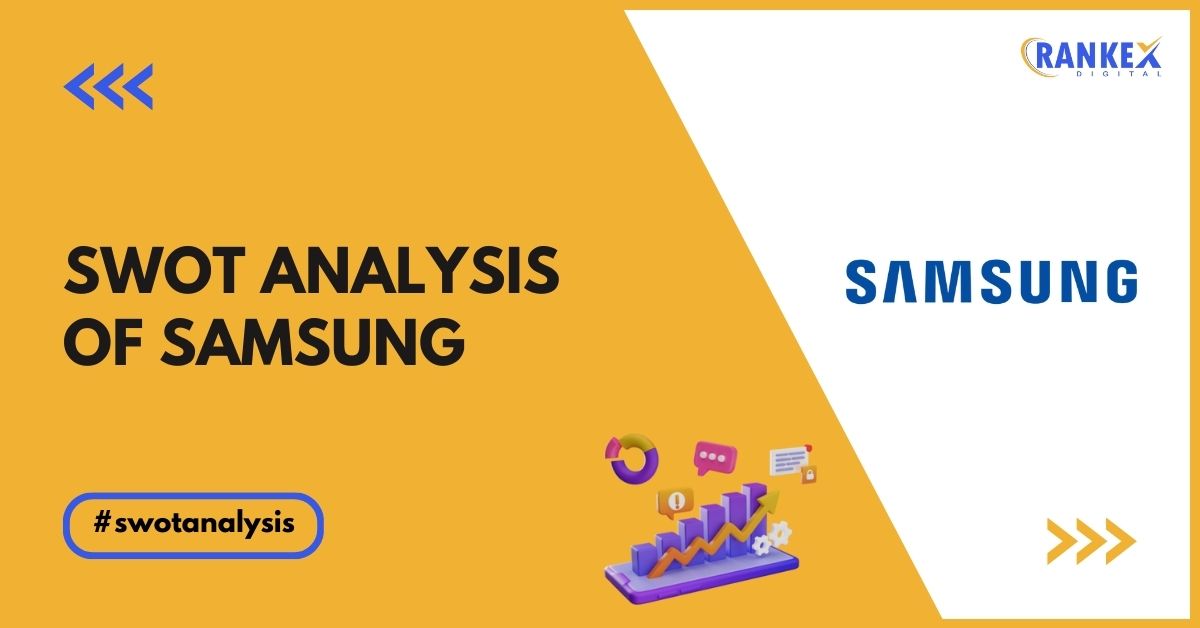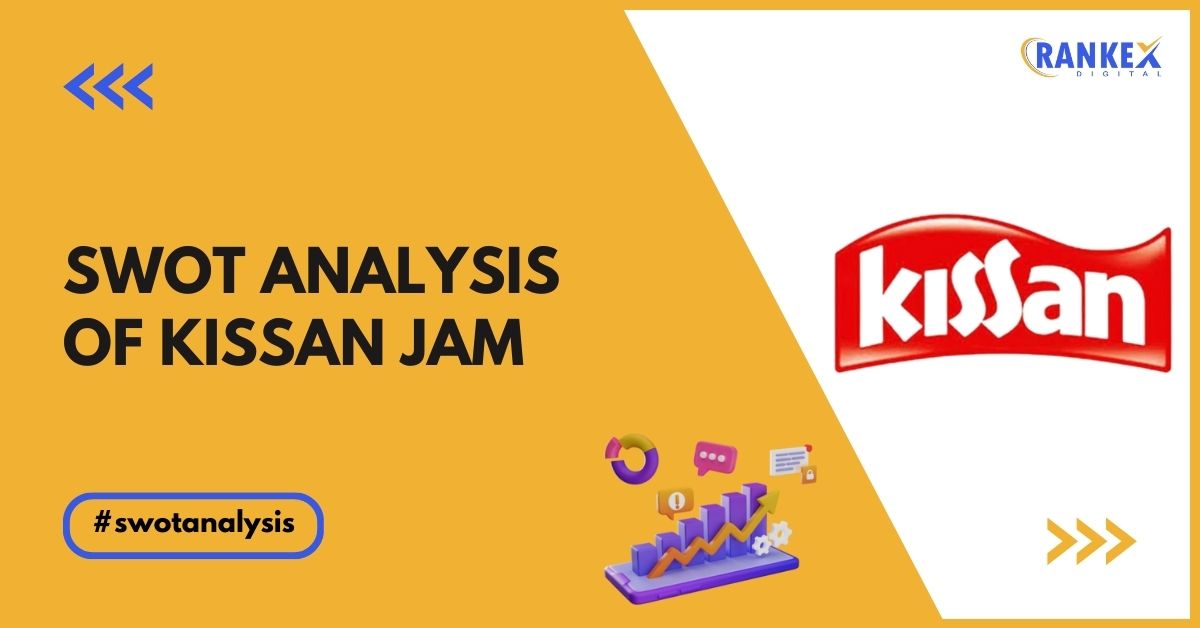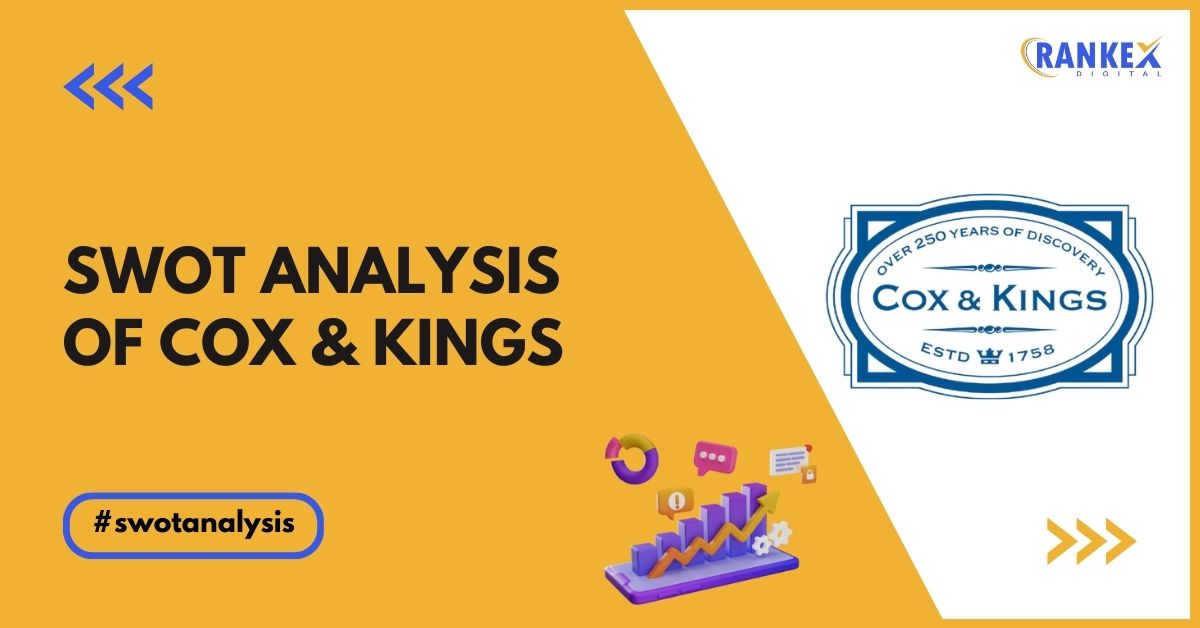Samsung Electronics is one of the world’s largest technology companies, widely recognized for its innovation and leadership in consumer electronics, semiconductors, and telecommunications equipment. Founded in 1938, the South Korean conglomerate has grown into a global leader, competing with major tech giants across the world.
With an extensive product portfolio ranging from smartphones and TVs to semiconductors and home appliances, Samsung has positioned itself as a powerhouse in the technology sector.
In this blog, we will explore a SWOT analysis of Samsung, highlighting its current strengths, weaknesses, opportunities, and threats.
Table of Contents
Overview of Samsung
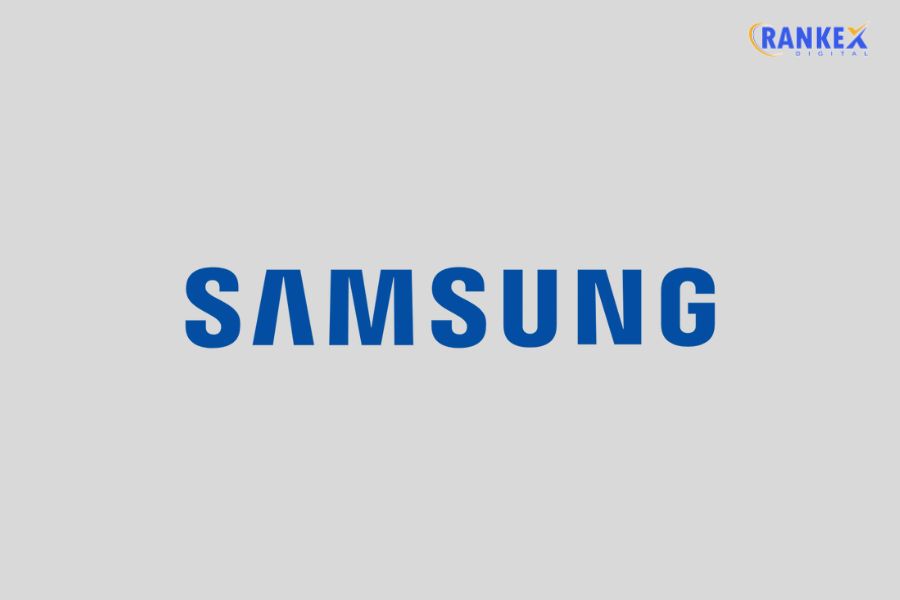
| Founder | Lee Byung-chul |
|---|---|
| Year Founded | 1938 |
| Origin | Daegu, South Korea |
| Headquarters | Seoul, South Korea |
| Industry | Electronics, Semiconductors, IT |
| Annual Revenue | $245.2 Billion (2023) |
| Employees | 270,000+ (Globally) |
Samsung is widely known for its Galaxy smartphones, televisions, and display technologies, but its semiconductor business is another major driver of growth. The company’s innovation extends into AI, 5G, and the Internet of Things (IoT), keeping Samsung at the forefront of tech advancements.
Current News on the Market on Samsung
- Expanding Semiconductor Dominance: Samsung is aggressively expanding its semiconductor production capabilities, focusing on advanced chips used in AI, 5G devices, and automotive applications.
- Innovations in Foldable Devices: Samsung continues to lead the market in foldable smartphones, with its Galaxy Z Fold and Z Flip series gaining popularity for their innovative designs.
- Sustainability Initiatives: Samsung has committed to achieving net-zero emissions by 2050 and continues to invest in eco-friendly technologies, including renewable energy and sustainable packaging.
SWOT Analysis of Samsung
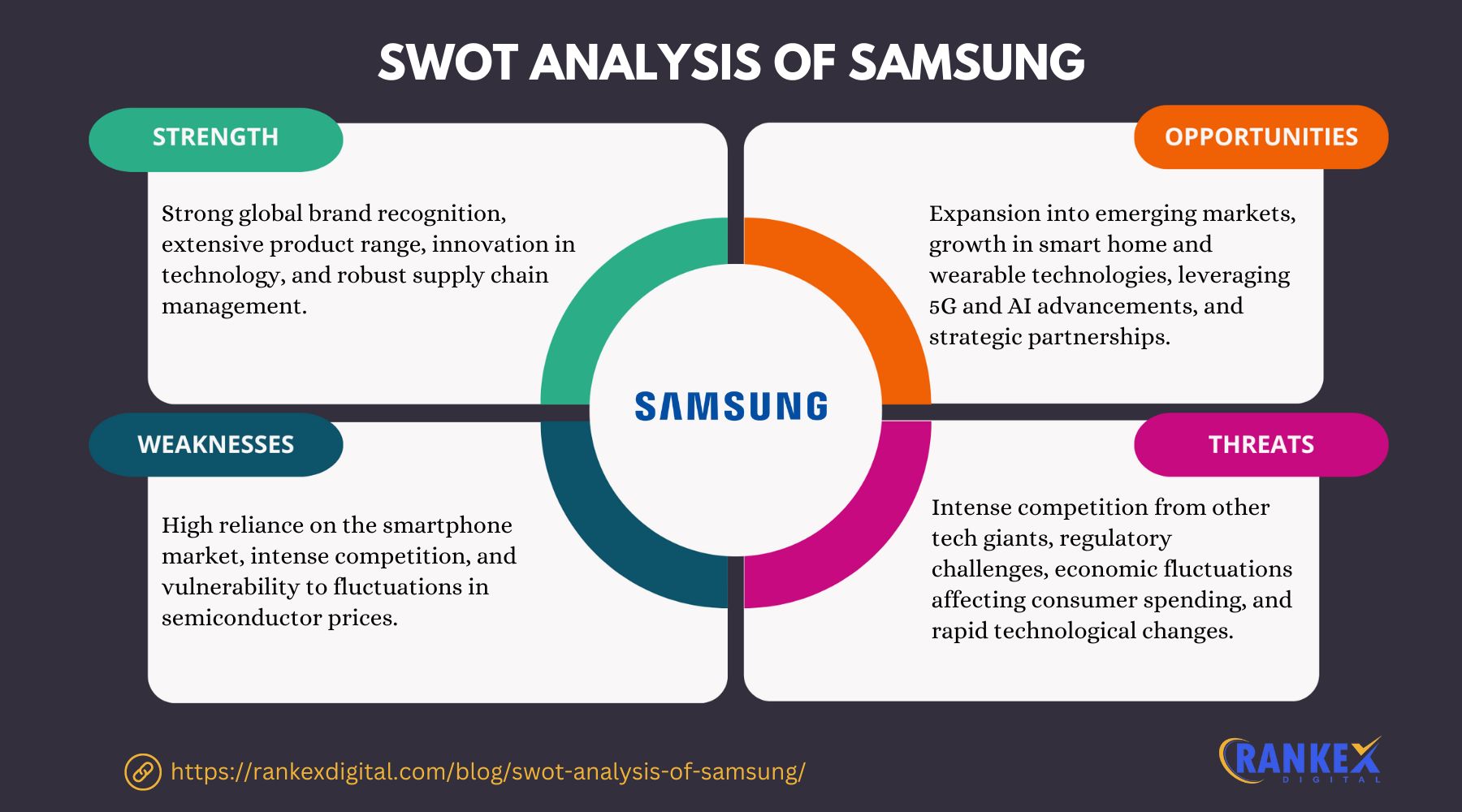
Strengths of Samsung
- Global Market Leadership
Samsung is one of the world’s largest manufacturers of consumer electronics, semiconductors, and home appliances. The company is a dominant player in the smartphone market, consistently competing with Apple for the top spot in global sales. Its leadership in both hardware and software gives it a competitive edge across various tech sectors. - Diversified Product Portfolio
Samsung’s extensive product range, including smartphones, tablets, televisions, home appliances, and semiconductors, provides the company with diversified revenue streams. This diversification helps Samsung remain resilient in the face of market fluctuations and industry-specific downturns. - Innovation and R&D Investment
Samsung is a pioneer in innovation, investing heavily in research and development. Its advancements in foldable smartphones, AMOLED displays, and semiconductor technology have kept it at the cutting edge of the tech industry. Samsung’s commitment to R&D ensures that it consistently introduces new, groundbreaking products. - Strong Brand Equity
Samsung has built a powerful brand that is synonymous with quality, innovation, and reliability. Its reputation as a trusted electronics brand strengthens customer loyalty and helps the company maintain a strong market presence globally. - Leadership in Semiconductor Technology
Samsung is a world leader in the semiconductor industry, particularly in memory chips, where it holds a significant market share. The company’s advancements in semiconductors have been crucial for the growth of various industries, including AI, 5G, and IoT.
Weaknesses of Samsung
- High Dependence on Smartphone Sales
A significant portion of Samsung’s revenue is derived from its smartphone division, which makes it vulnerable to market saturation and intense competition. Despite diversification, a slowdown in the smartphone market can negatively impact the company’s overall performance. - Complex Supply Chain
Samsung’s vast product range requires a highly complex and global supply chain, which can lead to operational inefficiencies. Supply chain disruptions, such as those caused by pandemics or geopolitical tensions, can significantly impact Samsung’s ability to deliver products on time and at a competitive cost. - Inconsistent Profit Margins in Some Segments
While Samsung’s semiconductor and smartphone divisions are highly profitable, other segments like consumer electronics and home appliances have comparatively lower profit margins. This inconsistency can affect the company’s overall profitability. - Legal and Patent Issues
Samsung has faced numerous legal challenges and patent disputes over the years, especially in its rivalry with Apple. These legal battles can be costly and affect the company’s public image and financial stability.
Opportunities for Samsung
- Growth in 5G and AI Markets
The rise of 5G technology presents a massive opportunity for Samsung, both in terms of device manufacturing and network equipment. Samsung is well-positioned to lead the 5G revolution, providing smartphones, semiconductors, and infrastructure for 5G networks. Additionally, advancements in AI offer further opportunities in smart devices, healthcare, and automotive technology. - Expansion in Emerging Markets
Emerging markets, particularly in Asia, Africa, and Latin America, offer significant growth opportunities for Samsung’s consumer electronics and smartphone businesses. With rising disposable incomes and increasing internet penetration, Samsung can expand its market share in these regions. - Sustainability and Green Technology
With increasing consumer and regulatory demand for sustainable products, Samsung can leverage its sustainability initiatives to create eco-friendly devices and packaging. Expanding its focus on renewable energy and green manufacturing processes can further strengthen its brand reputation. - Automotive Industry Expansion
Samsung has the opportunity to grow in the automotive sector by supplying semiconductors and display technologies for electric vehicles (EVs) and autonomous driving systems. The global shift towards electric and smart vehicles opens up new revenue streams for Samsung’s semiconductor and display divisions. - E-commerce and Direct-to-Consumer Channels
With the growth of online shopping, Samsung can enhance its e-commerce and direct-to-consumer strategies. By strengthening its digital presence, the company can improve customer engagement, streamline the purchasing process, and boost sales in a competitive marketplace.
Threats to Samsung
- Intense Competition in the Technology Sector
Samsung faces fierce competition from global giants like Apple, Huawei, Xiaomi, and Google in the smartphone and electronics markets. In the semiconductor space, competitors like Intel and TSMC continue to challenge Samsung’s market dominance. This intense competition can impact market share and profit margins. - Supply Chain Disruptions
Samsung’s global supply chain is vulnerable to disruptions caused by geopolitical tensions, natural disasters, and pandemics. Any delay in the supply of raw materials or components can significantly affect production and delivery timelines. - Price Sensitivity in Emerging Markets
While Samsung aims to expand its presence in emerging markets, price sensitivity in these regions can be a challenge. Local manufacturers offering low-cost alternatives may limit Samsung’s ability to capture market share, particularly in the budget smartphone and electronics segments. - Regulatory and Geopolitical Risks
Samsung operates in multiple countries, making it subject to various regulatory requirements and geopolitical tensions. Trade restrictions, tariffs, and government regulations can pose significant challenges to its international operations. - Technological Obsolescence
The rapid pace of technological advancements in the consumer electronics and semiconductor industries means that products can quickly become obsolete. Samsung must continuously innovate to stay ahead of competitors and meet evolving consumer demands.
Competitors of Samsung
Samsung operates in highly competitive markets, with major global players across its different business segments. Here are Samsung’s top competitors:
- Apple Inc.
Apple is Samsung’s primary competitor in the smartphone market, especially in the premium segment. The rivalry between Samsung’s Galaxy and Apple’s iPhone is one of the most well-known in the tech world. - Huawei Technologies
Despite facing challenges due to U.S. trade restrictions, Huawei remains a significant competitor in the smartphone market, particularly in China and other Asian markets. Huawei also competes with Samsung in 5G technology and telecommunications equipment. - TSMC (Taiwan Semiconductor Manufacturing Company)
TSMC is Samsung’s main competitor in the semiconductor manufacturing industry. TSMC leads the market in producing advanced chips, particularly for AI, 5G, and other cutting-edge technologies. - Xiaomi
Xiaomi is a rising competitor, particularly in the smartphone market, where it has gained significant market share in China, India, and other emerging markets. Xiaomi’s affordable devices pose a challenge to Samsung’s dominance in these regions. - Sony
In the display and consumer electronics markets, Sony competes with Samsung in products like televisions and cameras. Sony’s high-quality display technologies and innovations in imaging challenge Samsung’s market leadership in premium electronics.
Conclusion
Samsung’s SWOT analysis highlights its global leadership in the technology sector, driven by innovation, a diversified product portfolio, and a strong presence in key markets.
However, the company faces challenges from intense competition, supply chain disruptions, and regulatory risks.
By capitalizing on emerging technologies like 5G and AI, expanding into automotive electronics, and embracing sustainability, Samsung can continue to grow and strengthen its market position.
Frequently Asked Questions
1. What are the strengths of Samsung?
Samsung’s strengths include its strong brand recognition, diverse product portfolio across multiple industries (consumer electronics, smartphones, semiconductors), innovation in technology, a robust global supply chain, and financial strength.
2. What weaknesses does Samsung face?
Samsung faces challenges such as dependence on the highly competitive smartphone market, vulnerability to supply chain disruptions, a complex organizational structure, and the potential for intellectual property issues or patent disputes.
3. What opportunities does Samsung have?
Samsung has opportunities in emerging markets, expanding its presence in the 5G and semiconductor industries, investing in AI and IoT technologies, and leveraging sustainability trends for environmentally conscious products.
4. What threats does Samsung face?
Samsung faces threats from intense competition in consumer electronics (especially from Apple and Chinese brands), price pressure in smartphones, regulatory scrutiny, and geopolitical risks affecting its supply chain.
5. How does Samsung maintain its leadership in the smartphone market?
Samsung maintains leadership by offering a broad range of smartphones catering to various segments, leveraging innovative features like high-quality displays, cameras, and 5G capabilities.
6. How is Samsung performing in the semiconductor industry?
Samsung is a dominant player in the semiconductor industry, particularly in memory chips, and continues to invest in cutting-edge technologies, solidifying its position as a leader in this high-growth sector.
7. What is Samsung’s approach to sustainability?
Samsung is committed to sustainability through efforts like using eco-friendly materials, reducing carbon emissions, and promoting energy-efficient products, aligning with growing consumer and regulatory expectations.
8. What are the challenges Samsung faces in the consumer electronics market?
Samsung faces price competition, particularly in the smartphone and TV sectors, and the rapid pace of technological change, requiring continuous innovation to stay ahead in the market.
9. How does Samsung’s global presence benefit the company?
Samsung’s global presence allows it to reach diverse markets, benefit from economies of scale, and reduce reliance on any single region, strengthening its financial position and enabling faster market response.
10. How does Samsung handle innovation?
Samsung invests heavily in R&D, constantly innovating in areas like mobile technology, displays, and semiconductors, ensuring its products remain competitive and align with emerging consumer trends.

